A Passive Temperature-Sensing Antenna Based on a Bimetal Strip Coil
Abstract
:1. Introduction
2. Design Methods
2.1. A Bimetal Strip Coil for Temperature Sensing
2.2. A Dipole Antenna for Wireless Identification and Sensing
2.3. A Back Cavity for the Antenna Assembly
3. Antenna Simulation Results
3.1. Radiation Performance of the Antenna
3.2. Frequency Shift of the Antenna with the Rotation of the Bimetal Coil
4. Antenna Prototypes and Measurement
4.1. Prototypes of the Temperature-Sensing Antenna
4.2. Measurement of the Proposed Antenna
4.3. Comparison between Simulation Results and Measurement Results
5. Conclusions
Acknowledgments
Author Contributions
Conflicts of Interest
References
- Yang, F.; Qiao, Q.; Virtanen, J.; Elsherbeni, A.Z.; Ukkonen, L.; Sydanheimo, L. Reconfigurable sensing antenna: A slotted patch design with temperature sensation. IEEE Antennas Wirel. Propag. Lett. 2012, 11, 632–635. [Google Scholar] [CrossRef]
- Amin, E.M.; Saha, J.K.; Karmakar, N.C. Smart sensing materials for low-cost chipless rfid sensor. IEEE Sens. J. 2014, 14, 2198–2207. [Google Scholar] [CrossRef]
- Guillet, A.; Vena, A.; Perret, E.; Tedjini, S. Design of a chipless RFID sensor for water level detection. In Proceedings of the 2012 15th International Symposium on Antenna Technology and Applied Electromagnetics (ANTEM), Toulouse, France, 25–28 June 2012; pp. 1–4. [Google Scholar]
- Vena, A.; Babar, A.A.; Syd, L.; Ukkonen, L.; Tentzeris, M.M. A novel wireless inkjet-printed chipless sensor for moisture detection utilizing carbon nanotube. In Proceedings of the 2013 IEEE Antennas and Propagation Society International Symposium (APSURSI), Orlando, FL, USA, 7–13 July 2013; pp. 2303–2304. [Google Scholar]
- Hasan, A.; Bhattacharyya, R.; Sarma, S. A monopole-coupled RFID sensor for pervasive soil moisture monitoring. In Proceedings of the 2013 IEEE Antennas and Propagation Society International Symposium (APSURSI), Orlando, FL, USA, 7–13 July 2013; pp. 2309–2310. [Google Scholar]
- Hasani, M.; Vena, A.; Sydss, L.; Ukkonen, L.; Tentzeris, M.M. Implementation of a dual-interrogation-mode embroidered rfid-enabled strain sensor. IEEE Antennas Wirel. Propag. Lett. 2013, 12, 1272–1275. [Google Scholar] [CrossRef]
- Occhiuzzi, C.; Paggi, C.; Marrocco, G. Passive rfid strain-sensor based on meander-line antennas. IEEE Trans. Antennas Propag. 2011, 59, 4836–4840. [Google Scholar] [CrossRef]
- Yi, X.; Cho, C.; Fang, C.H.; Cooper, J.; Lakafosis, V.; Vyas, R.; Wang, Y.; Leon, R.T.; Tentzeris, M.M. Wireless strain and crack sensing using a folded patch antenna. In Proceedings of the 2012 6th European Conference on Antennas and Propagation (EUCAP), Prague, Czech Republic, 26–30 March 2012; pp. 1678–1681. [Google Scholar]
- Paggi, C.; Occhiuzzi, C.; Marrocco, G. Sub-millimeter displacement sensing by passive uhf rfid antennas. IEEE Trans. Antennas Propag. 2014, 62, 905–912. [Google Scholar] [CrossRef]
- Suwalak, R.; Phongcharoenpanich, C.; Torrungrueng, D. Detection of reinforced metal in light weight concrete structures using an RFID sensor system. In Proceedings of the 2014 IEEE Conference on Antenna Measurements & Applications (CAMA), Antibes, France, 16–19 November 2014; pp. 1–2. [Google Scholar]
- Kim, S.; Kawahara, Y.; Georgiadis, A.; Collado, A.; Tentzeris, M.M. Low-cost inkjet-printed fully passive rfid tags using metamaterial-inspired antennas for capacitive sensing applications. In Proceedings of the 2013 IEEE MTT-S International Microwave Symposium Digest (IMS), Seattle, WA, USA, 2–7 June 2013; pp. 1–4. [Google Scholar]
- Karmakar, N.; Amin, E.M. Passive RFID sensor for remote detection of partial discharge. In Proceedings of the 2011 IEEE Sensors, Limerick, Ireland, 28–31 October 2011; pp. 550–553. [Google Scholar]
- Ziai, M.A.; Batchelor, J.C. Passive UHF RFID tilt sensor. In Proceedings of the 2015 International Conference on Electromagnetics in Advanced Applications (ICEAA), Turin, Italy, 7–11 September 2015; pp. 137–140. [Google Scholar]
- Jiang, Z.; Yang, F. Reconfigurable sensing antennas integrated with thermal switches for wireless temperature monitoring. IEEE Antennas Wirel. Propag. Lett. 2013, 12, 914–917. [Google Scholar] [CrossRef]
- Fu, Z.; Yang, F. A slotted patch antenna integrated with thermal switch for high-sensitivity temperature monitoring. IEEE Antennas Wirel. Propag. Lett. 2015, 14, 998–1001. [Google Scholar] [CrossRef]
- Kaiming, D.; Yang, F.; Shenheng, X.; Maokun, L. Dual-frequency reconfigurable patch antenna with thermal switches for temperature monitoring. In Proceedings of the 2016 URSI International Symposium on Electromagnetic Theory (EMTS), Espoo, Finland, 14–18 August 2016; pp. 118–120. [Google Scholar]
- Kubina, B.; Sch, M.; Mandel, C.; Mehmood, A.; Jakoby, R. Wireless high-temperature sensing with a chipless tag based on a dielectric resonator antenna. In Proceedings of the 2013 IEEE SENSORS, Baltimore, MD, USA, 3–6 November 2013; pp. 1–4. [Google Scholar]
- Virtanen, J.; Yang, F.; Ukkonen, L.; Elsherbeni, A.Z.; Babar, A.A.; Sydänheimo, L. Dual port temperature sensor tag for passive UHF RFID systems. Sens. Rev. 2014, 34, 154–169. [Google Scholar] [CrossRef]
- Qiao, Q. Design and Analysis of Reconfigurable Sensing Antennas for Wireless Sensing Applications; The University of Mississippi: Oxford, MS, USA, 2014. [Google Scholar]
- Bhadra, S.; Tan, D.S.Y.; Thomson, D.J.; Freund, M.S.; Bridges, G.E. A wireless passive sensor for temperature compensated remote pH monitoring. IEEE Sens. J. 2013, 13, 2428–2436. [Google Scholar] [CrossRef]
- Balanis, C.A. Image theory. In Advanced Engineering Electromagnetics, 2nd ed.; Kulesa, T., Ashenberg, W., Ang-Bok, A., Eds.; John Wiley & Sons: Hoboken, NJ, USA, 2012; pp. 314–321. [Google Scholar]
- Fu, Z. Theoretical Design and Application of High-Sensitivity Reconfigurable Sensing Antenna; Tsinghua University: Beijing, China, 2014. [Google Scholar]
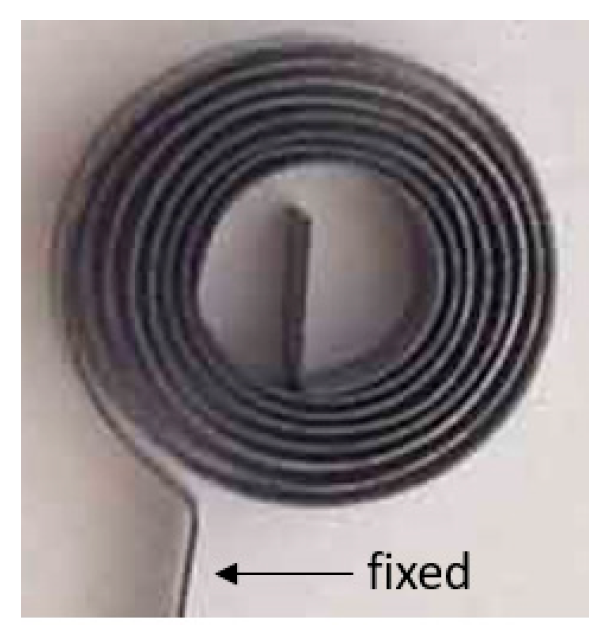
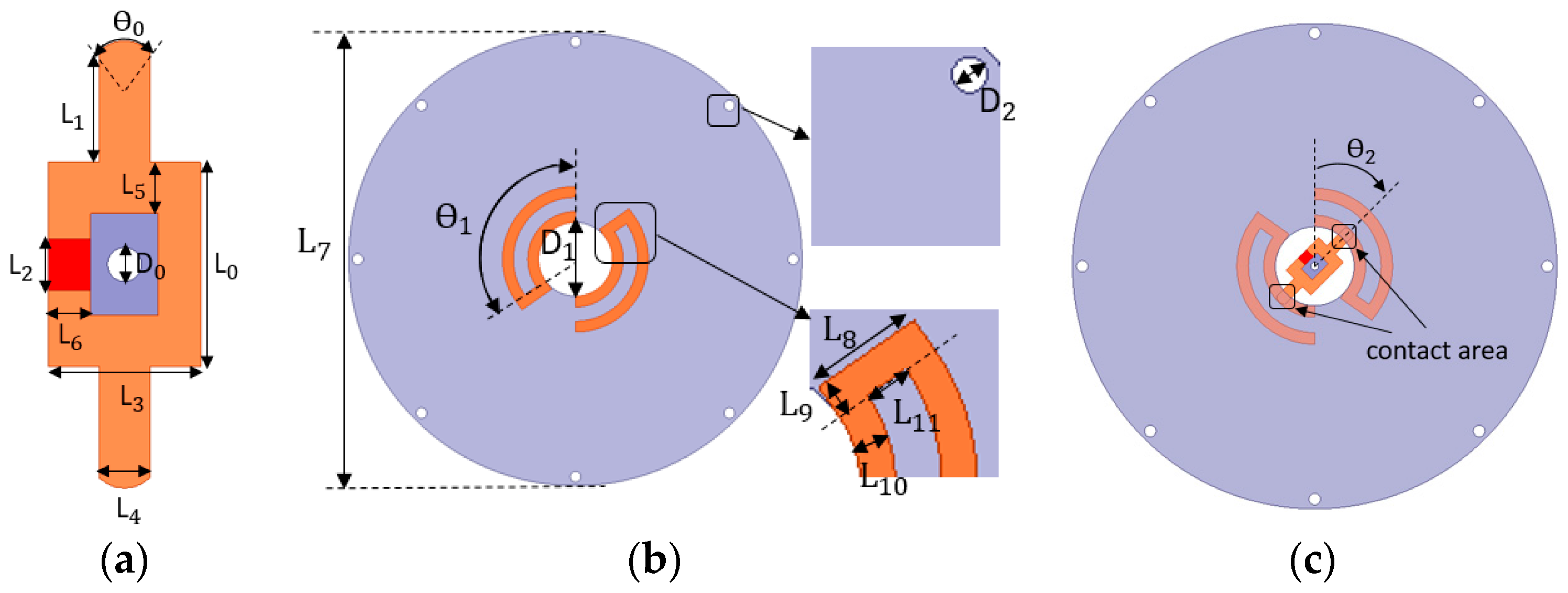
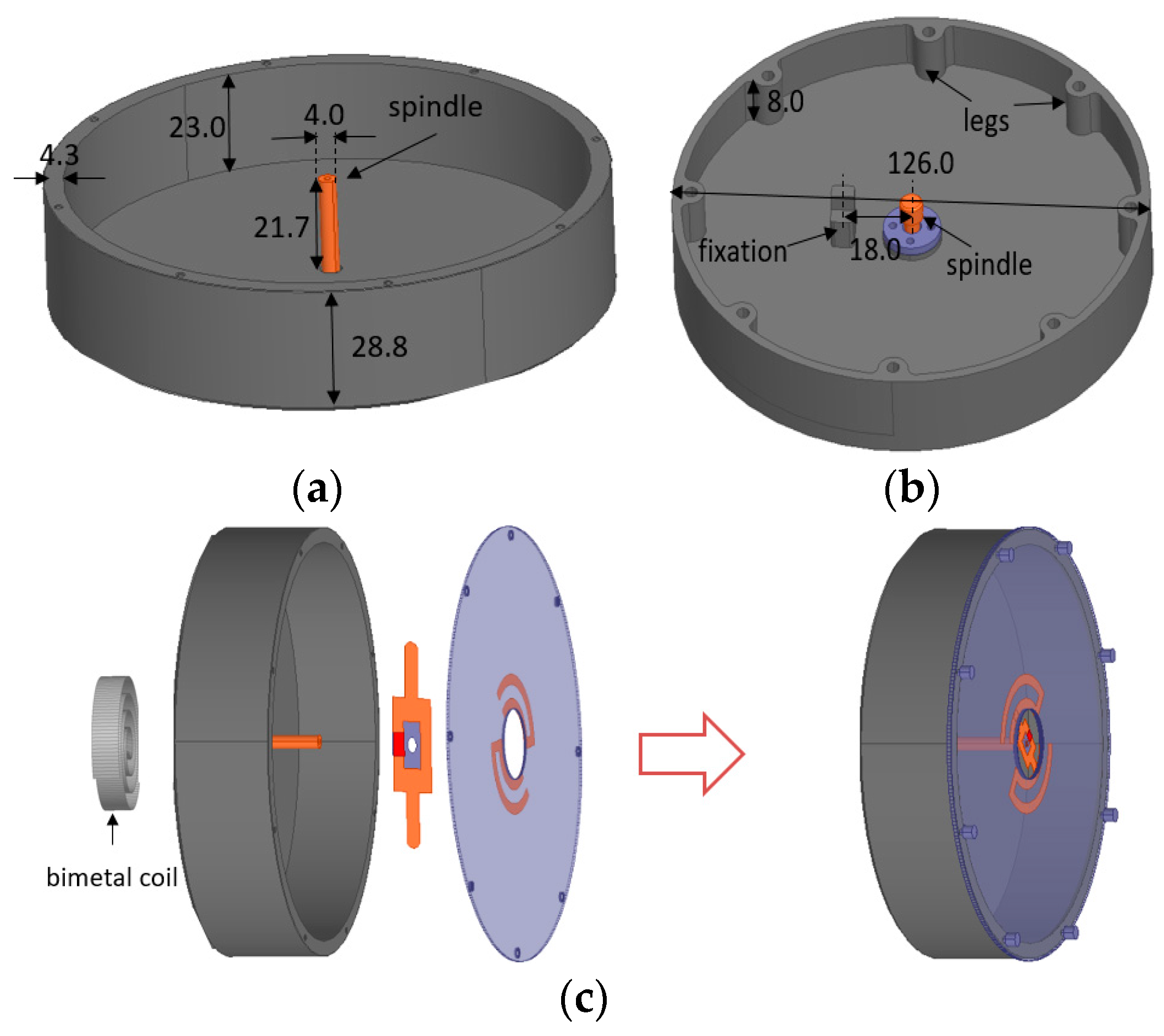
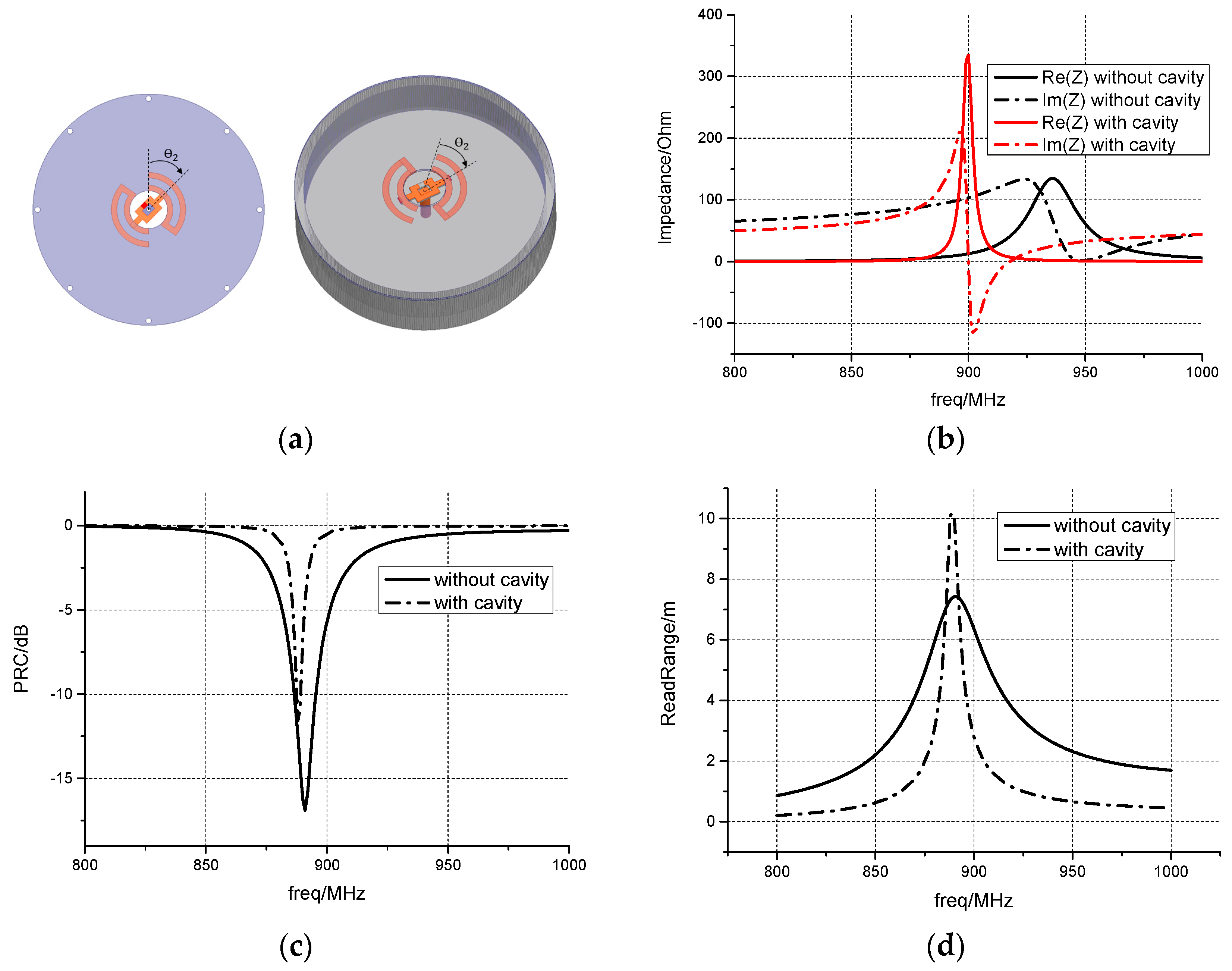

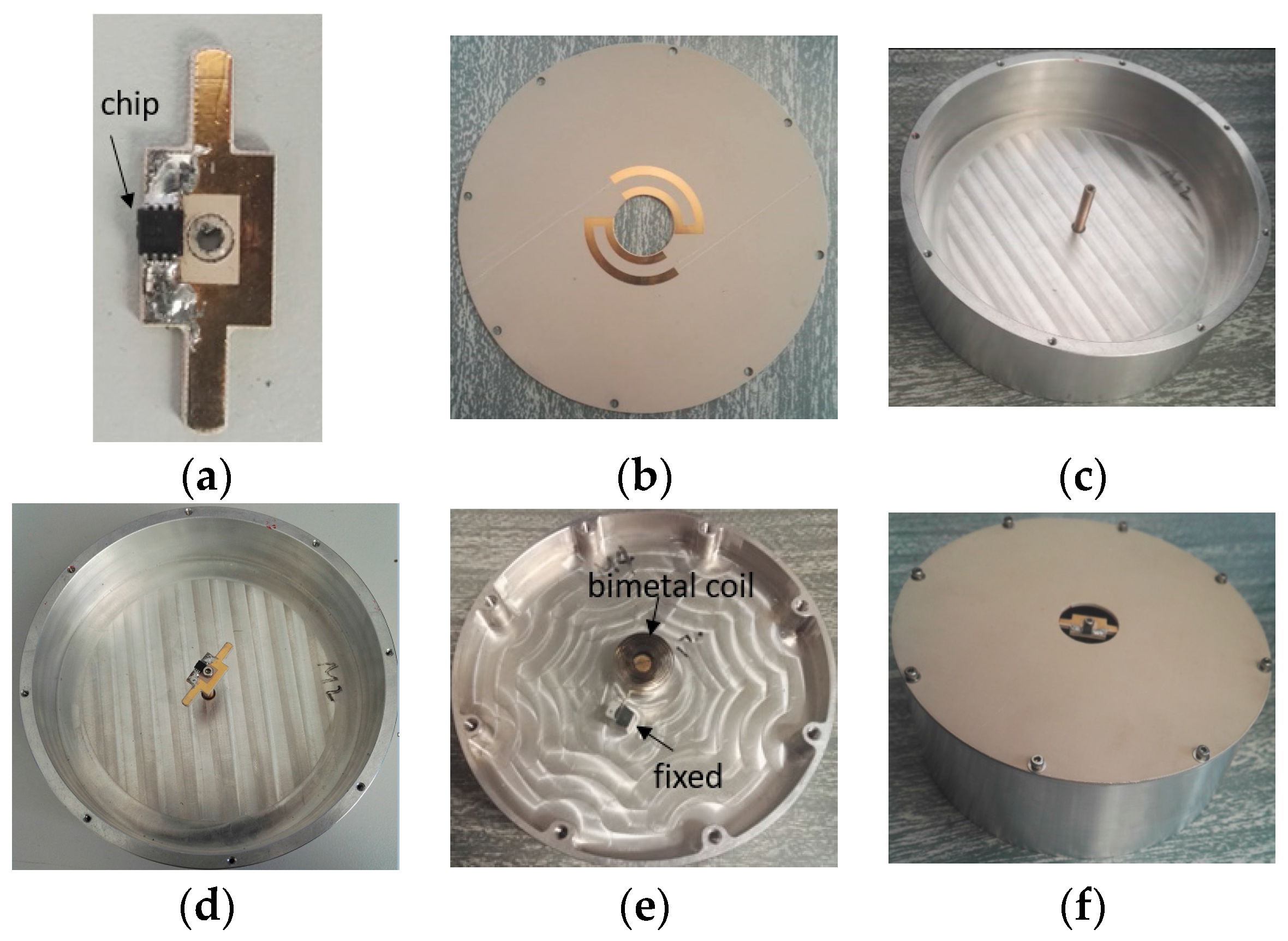


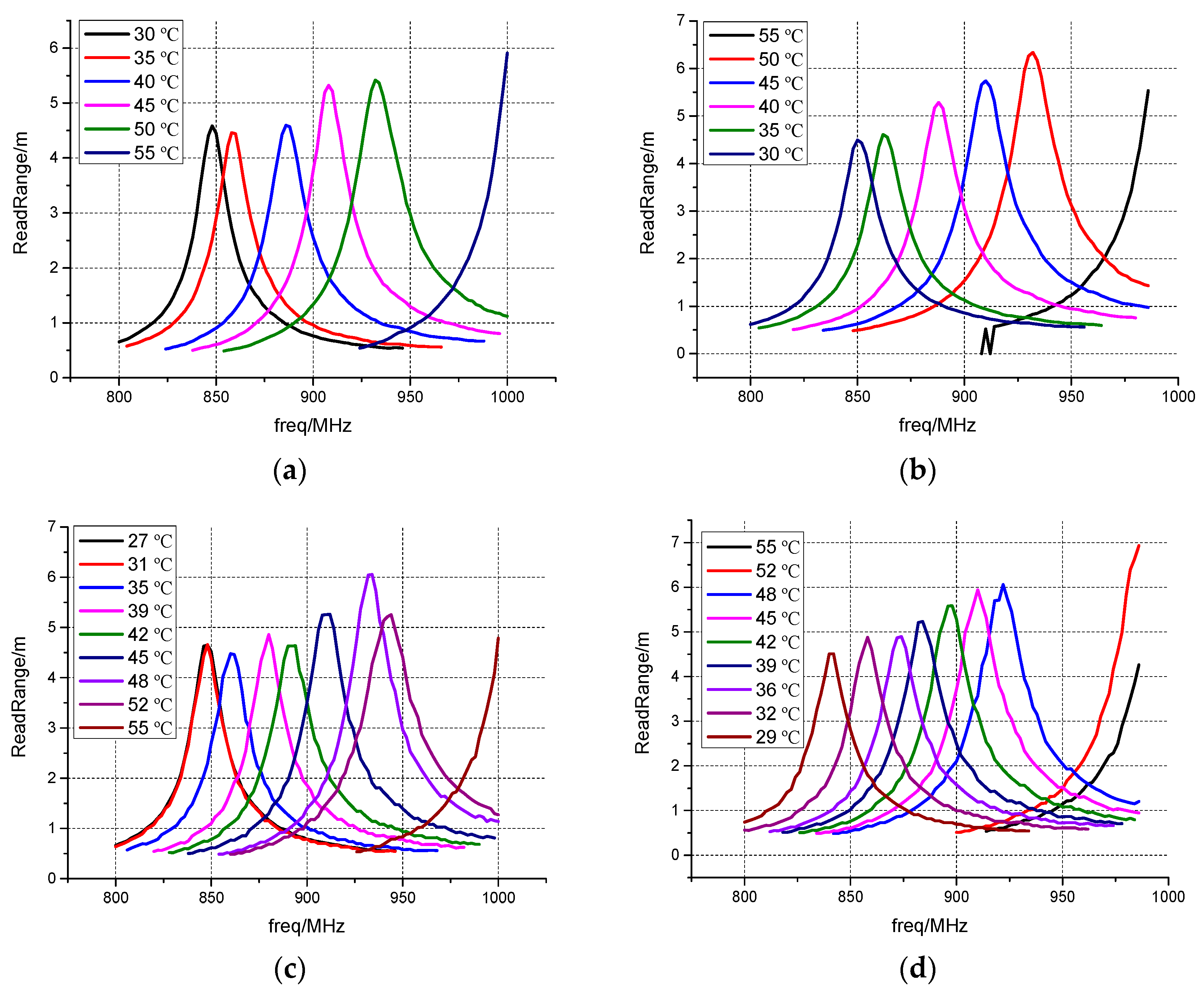
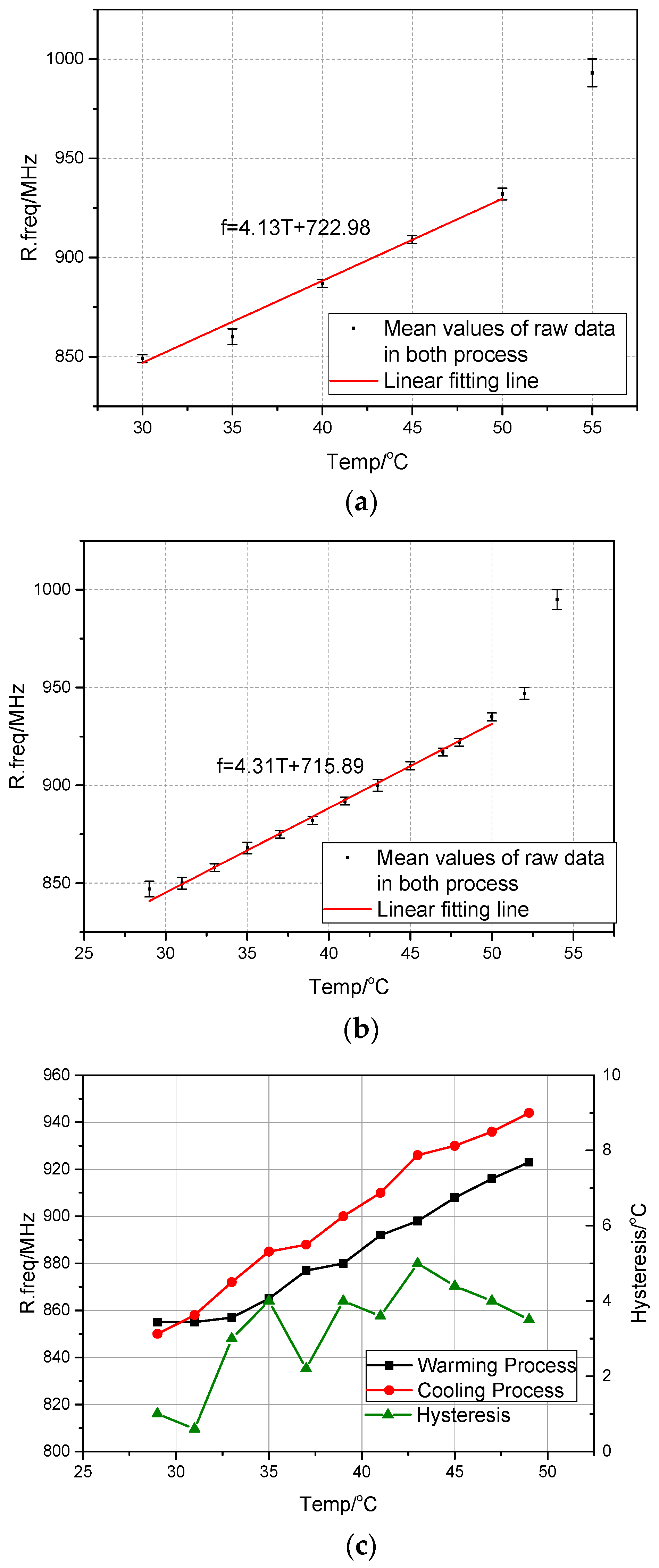
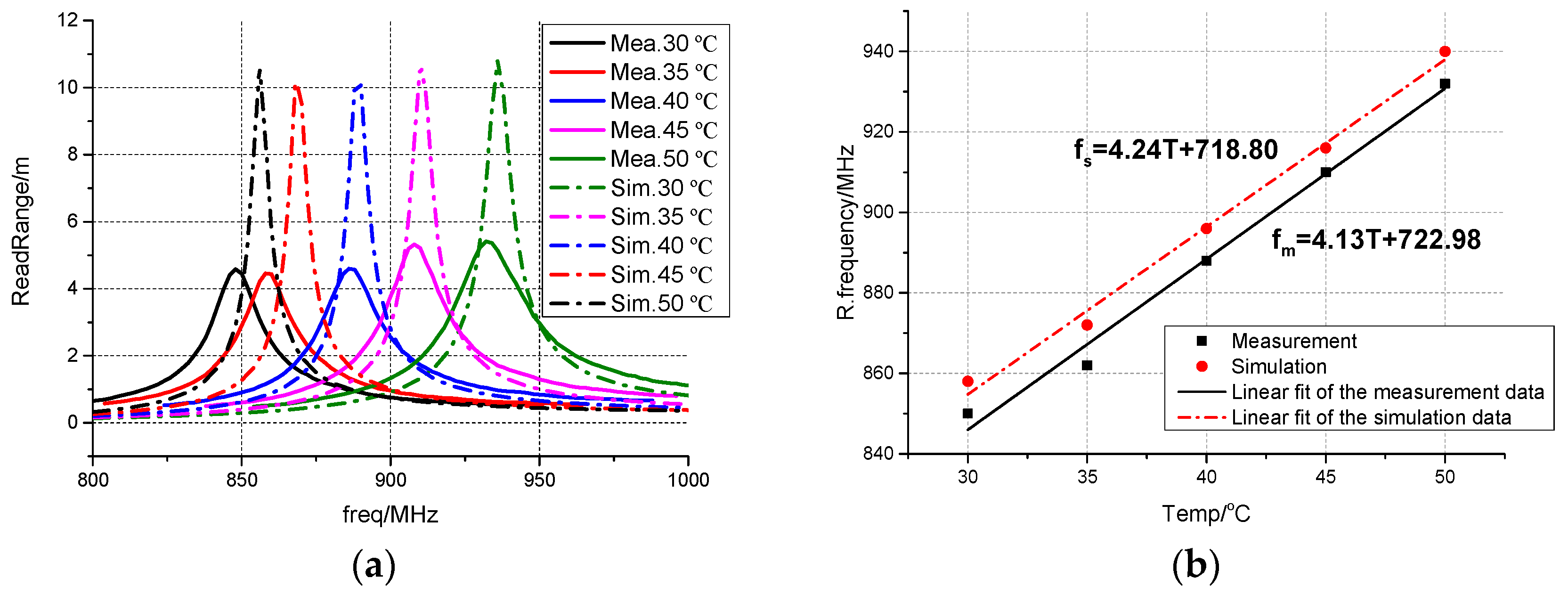
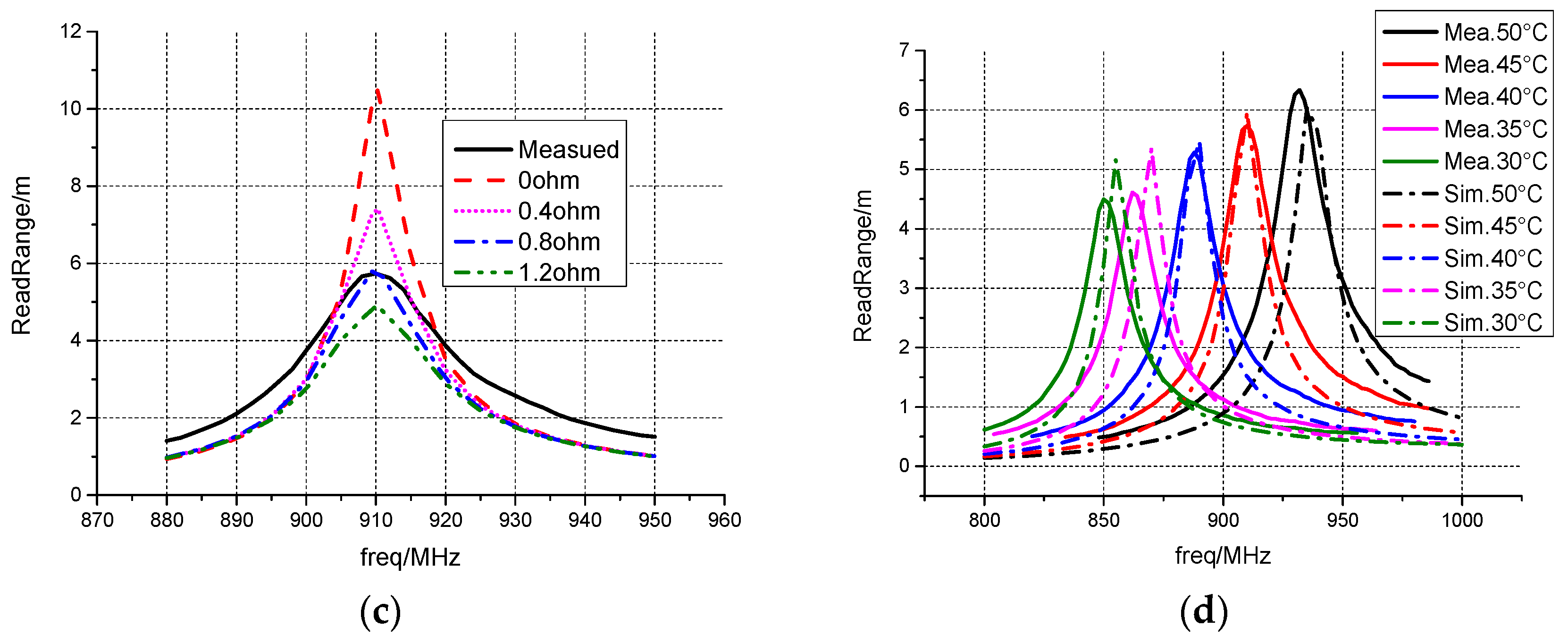
| Parameter | Value | Parameter | Value |
|---|---|---|---|
| L0 | 12.00 mm | L9 | 3.00 mm |
| L1 | 6.55 mm | L10 | 3.00 mm |
| L2 | 3.00 mm | L11 | 4.00 mm |
| L3 | 9.00 mm | D0 | 2.00 mm |
| L4 | 3.00 mm | D1 | 20.50 mm |
| L5 | 3.00 mm | D2 | 3.00 mm |
| L6 | 2.50 mm | θ0 | 88.1° |
| L7 | 63.00 mm | θ1 | 135.0° |
| L8 | 10.00 mm | θ2 | Variable |
| Temperature (°C) | θ2 (°) |
|---|---|
| 30 | 0 |
| 35 | 11 |
| 40 | 28 |
| 45 | 45 |
| 50 | 66 |
© 2017 by the authors. Licensee MDPI, Basel, Switzerland. This article is an open access article distributed under the terms and conditions of the Creative Commons Attribution (CC BY) license (http://creativecommons.org/licenses/by/4.0/).
Share and Cite
Shi, X.; Yang, F.; Xu, S.; Li, M. A Passive Temperature-Sensing Antenna Based on a Bimetal Strip Coil. Sensors 2017, 17, 665. https://doi.org/10.3390/s17040665
Shi X, Yang F, Xu S, Li M. A Passive Temperature-Sensing Antenna Based on a Bimetal Strip Coil. Sensors. 2017; 17(4):665. https://doi.org/10.3390/s17040665
Chicago/Turabian StyleShi, Xianwei, Fan Yang, Shenheng Xu, and Maokun Li. 2017. "A Passive Temperature-Sensing Antenna Based on a Bimetal Strip Coil" Sensors 17, no. 4: 665. https://doi.org/10.3390/s17040665




